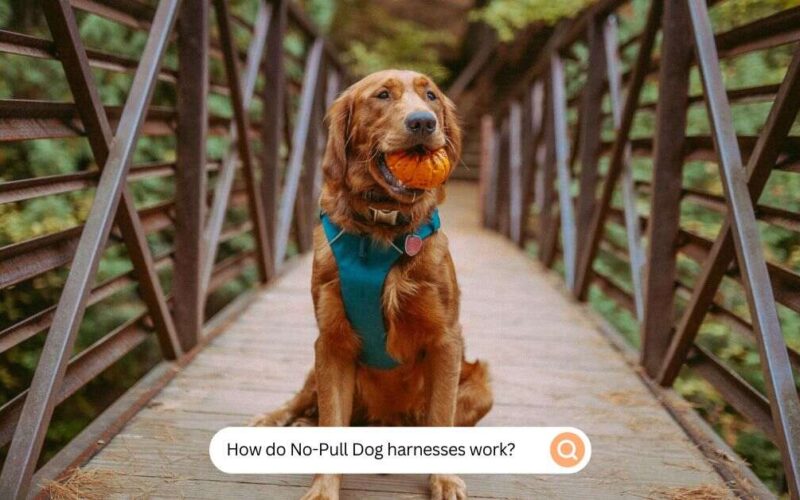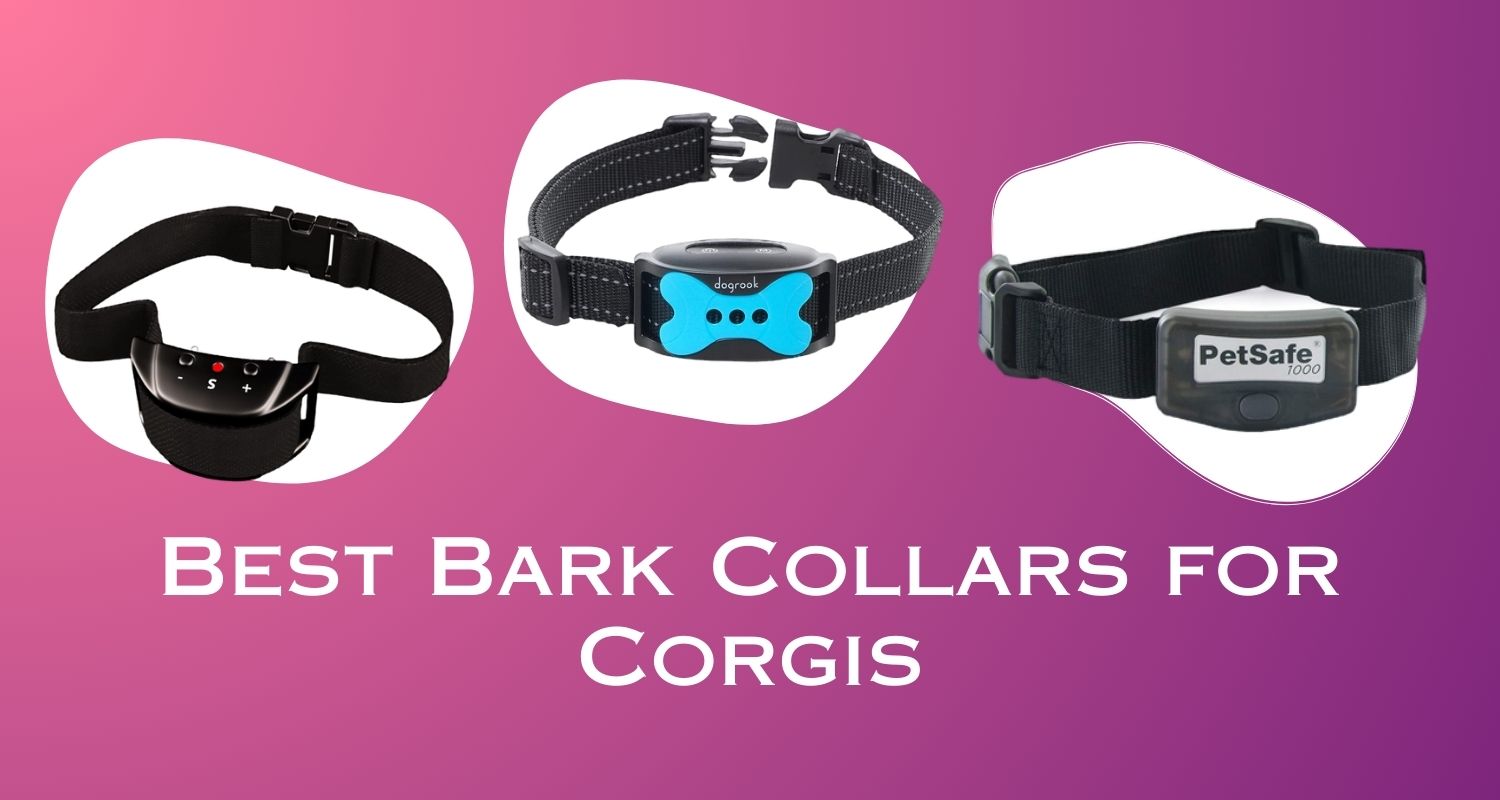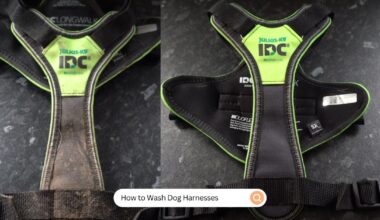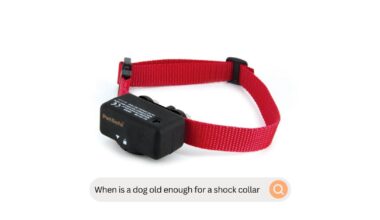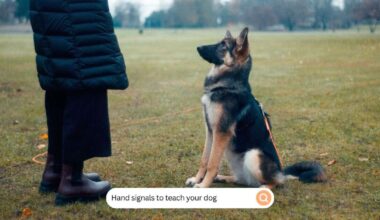About the Author: Nettie Finley, the Professional Dog Trainer at MyPetDoggie. Specializing in behavior rehabilitation, Nettie leads our team with her effective training techniques. As a certified canine behaviorist, she brings transformative change to challenging behavior cases. Her experience and expertise elevate our content, providing practical, insightful training advice for our readers. Also, she loves her Cavapoo!
Walking with a beloved canine is a pleasant experience for the pet owner. But it becomes a frustrating moment when your dog starts dragging you suddenly during a nice walk. Dog pulling is always annoying for a dog parent. When it comes to dog pulling, most dog owners turn to No-pull harnesses. But the question arises, How do No-Pull Dog harnesses work?
The No-Pull harness is specially made to discourage pulling. Unlike normal harnesses which create tension on the neck and cause throat. It’s wonderful to swipe on the non-pulling harness.
How Do No-Pull Dog Harnesses Work?
No-pull dog harnesses work by distributing force evenly across the back, shoulder, and chest to discourage pulling. They have a front leash attachment that redirects the dog when they pull, promoting better walking behavior. These harnesses offer more control and comfort compared to normal harnesses or traditional collars.

Features To Look For In A No-Pull Dog Harness:
Dogs consider pulling as a reward game. The no-pull dog harness is the best option to control your dog from pulling and provide comfort to you during outdoor walks. When selecting the no-pull dog harness, the following features will surely help you to get the best one.
Front clip design
The best feature of a no-pulling harness is the front clip design. The harness which has clips or rings on the chest area allows you better control of your dog’s movement. When your dog tries to pull, these clips put pressure on the leash which restricts his pulling and naturally redirects his attention back to you.
Adjustable straps
Most no-pull dog harnesses come with adjustable straps. You can adjust these straps like it’s needed. From an adjustable strap harness, your dog will not slip out and it doesn’t restrict his range of motion while walking. A properly fit and snug harness makes him secure and provides comfortable movement.
Padded or soft lining
A Padded harness with soft lining straps reduces discomfort and chances of chafing and skin irritation. Unlike normal harnesses which dig at the dog armpits and cause rashes, padded harnesses with chest plates minimize the chances of rubbing especially when extended walks, it is specifically important for the dogs that pull.
Secure buckles and clips
Before selecting any harness for your canine, properly check and ensure a secure buckle and clips. Harness with loose clips and buckles can cause accidents. The strongest and properly stitched harness makes your mind peaceful while outdoor walking.
Durability
Look for a harness that is well constructed, with durable material like nylon. A high-quality harness can handle all the pressure of a dog’s body without tearing and breaking. A harness that guarantees longevity and durability gives you daily enjoyable walks with your canine.
Reflective elements
Harness with reflective elements is crucial for nighttime walks. Some harnesses have a reflector on both the front and back side which reflects the lights when it’s dark and makes your pet visible from a distance of approximately 150 meters. The feature will surely help you when your pet suddenly jumps on the road while playing.
Multiple adjustment points
A harness with multiple adjustment points can easily fit on your dog’s body. You can customize it according to your dog’s size and body shape. It allows a strong grip, won’t slip out, and ensures a great fit and comfort for your canine.
Easy to put on
Select the harness which is easy to put on for your dog. Most dogs don’t like that harness that is difficult to wear and take off. They react aggressively and run away when they sense that the owner comes with a harness. Easy to put on a harness makes walking more convenient and joyful for both of you.
No choking on pressure
When a dog Pulls, it puts pressure on the neck which causes throat and chafing. A no-pull harness discourages pulling behavior, eliminates the chances of choking, and pressure, and prevents neck injuries.
Leash attachments
Several no-pulling harnesses offer different leash attachments, the first one is at the front of the dog’s chest, and the second one is at the back side of the neck. Both options can be considerable. You can select one according to the dog’s training scenario.
Breed and size consideration
While selecting the harness for your canine, consider your breed and its size. Some harnesses are made keeping the specific size and proportion in mind. It may not be suitable for your canine. It’s great if you get one that is the perfect size for your breed.
When looking for a no-pulling dog harness, these features will surely assist you in getting the best one, providing you with your canine, controlled, effective walks, and outdoor games.
9 Benefits Of No-Pull Harnesses
Many dog owners experience pulling during walks which makes walking unpleasant. I’m pretty sure that A no-pull harness is beneficial in this situation. These harnesses are specially designed to provide advantages to both the dog and the owners as well.

After knowing about its benefits you will understand why most dog owners prefer no-pull harnesses.
Improved Control
With a no-pull harness, you can have superior control of your dog’s movement during walks. The front attachment point discourages dog pulling and guides you about its direction.
Enhanced Training
For training purposes, no-pull dog harnesses are an effective tool for your canine. It reinforces positive walking behavior, promotes better leash manners, and teaches dogs to walk politely without excessive pulling. It reduces negative behaviors and develops good habits. These harnesses enhance the training process and make it much easier.
Less Strain On Neck And Throat
Mostly traditional collars put strain on the neck and throat and cause injuries on these sensitive areas due to pressure. No-pulling dog harness reduces the chances of strain as compared to collars, it evenly tends the pressure from neck to chest or back.
Reduced Risk Of Injury
If your dog is keen on pulling and lugging, a no-pull harness is essential for him. It is perfectly designed to control pulling. Due to pulling, high chances of injuries can occur. It can minimize those chances, caused by suddenly jerking by the leash. These harnesses protect the neck, throat, and torches from injuries.
Comfortable Fit
Many no-pull harnesses are padded and soft which provides comfort during extended walk. A strap adjustment harness provides a comfortable and snug fit that makes the harness more pleasant and secure than a collar or leash.
Versatility
No-pull dog harnesses offer versatile features. Such as multiple adjustment straps, and a D ring on the chest or back. These straps allow you to switch between front and back attachments according to your needs and choice. These versatile features are suitable for several situations.
Enhanced Bonding
These harnesses increased dogs’ interaction with their owner. It helps the pet to learn his owners’ expectations, and they both communicate and cooperate with each other during walking and playing which strengthens the bond between you and your canine and increases safety and security.
Safer For Brachycephalic Breed
Collars that make pressure on the nose and throat are very dangerous for brachycephalic breeds. Brachycephalic breeds such as bulldogs and pugs have small snouts, so no-pull dog harnesses are safer for them. It doesn’t pressure the throat and makes breathing easy for them.
Stress Reduction
A physically uncomfortable collar or harness causes stress for dogs. They hate to be stressed and afraid while walking and playing. No-pull harnesses reduce anxiety and stress for both the pet and owners, leading them to more enjoyable and relaxed outings.
No-pull dog harnesses offer a wide range of benefits that curb your dog’s pulling behavior, are effective for training purposes, and provide you more enjoyment walking with your beloved companion.
9 Disadvantages Of No Pull Dogs Harnesses
While no-pull dog harnesses have many potential benefits. It also has some disadvantages. As we become aware of how No-pull dog harnesses work? Along with these, it’s essential to know about the disadvantages.

Understanding these drawbacks surely guides you when you are choosing a harness for your canine.
Restrictive Feeling
When dogs are newly introduced to harness, they are not accustomed to it. Wearing a harness makes them feel restrictive. The sensation of straps surrounding the body leads to discomfort and unsettling initially.
Fit And Comfort
Every size of no-pull harness doesn’t fit on every dog’s body. Achieving the perfect fit for your canine is quite difficult. A harness that is poorly fit can cause chafing, itching, and discomfort.
Limited Communication
Where the harness reduces pulling behavior, it also restricts dogs’ head and neck movement. Leash around the neck may limit your communication and it’s difficult to get immediate feedback during walks.
Adjustment Period
In the introduction time period of harness to your canine, dogs try to resist and avoid wearing it. They need some time to adjust. During this adjustment period, it is crucial to gradually introduce a harness to your dog with polite reinforcement.
Different Harness Types
Harnesses have a huge variety of types and designs. Choosing the best one for your pet is challenging. Sometimes it requires trial and experimentation to find the perfect one.
Potential Chafing
Some no-pull harnesses cause chafing on dogs’ skin. It’s better to avoid them. Chafing mostly infects the particular areas where straps come into contact with the skin. Buy a harness according to your dog’s skin condition.
Over-Reliance On Equipment
As we discussed, a no-pull harness is an essential tool for training. But it isn’t good to over-reliance on one piece of equipment. Your dogs can learn leash manners and It is possible to train them to walk politely and discourage pulling behavior without harnesses.
Lack Of Versatility
Some harnesses are specially designed for only walks, your dog cannot play and run while wearing that harness. It needs to switch to another one for more activities. This lack of versatility is frustrating, for the dog and owner as well.
Professional Guidance Needed
Older dogs, Dogs who have medical issues, or who have unique training requirements need professional guidance. A certified dog trainer can easily handle all behavioral changes and train them well. Alone a no-pull harness does not address their complex problem.
Considering disadvantages along with advantages is the wise option. After understanding your dog’s particular needs, it’s easy to cope with these drawbacks and make your walk more enjoyable with your canine.
No-Pull Harnesses Vs. Regular Harnesses
As a responsible pet parent, you want to get the right and comfortable harness for your dog. Choosing the best harness according to your dog’s needs is a vital decision.

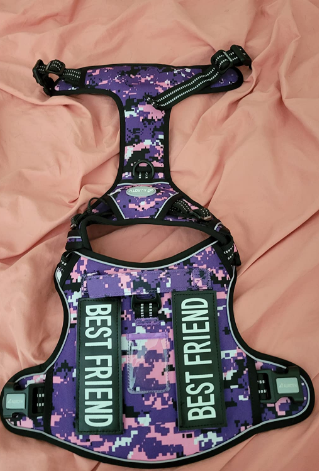
Here I compared some key factors of No-pull harnesses vs. regular harnesses which helps you to select the right one.
Purpose
No-pull harnesses have multiple leashes that evenly allocate pressure all over the body. It is specially designed to discourage pulling, reduce leash pressure, make walking comfortable, and provide more control to owners.
Regular harnesses are primarily designed to distribute leash pressure from the body. It is helpful for small breeds, and dogs who have respiratory issues.
Versatility
No-pull harnesses are used for training aids. The intent behind this is only for walking and training, the main feature of this harness is reducing pulling.
Regular harnesses are more versatile than no-pull harnesses. Your dog can easily enjoy walking, hiking, and running wearing a regular harness and it is also safe for car travel.
Training Aid
No-pull harnesses serve as training aids. Its controlled features make it a valuable tool while training. Front attachment points of this harness, redirect your pet back when pulling and prevent injuries.
Regular harnesses’ primary function is to provide comfort during walks. It doesn’t have a special feature like a front attachment point. These harnesses can commonly be used to provide leash manners and training as well.
Control
No-pull harnesses offer a better and more effective grip on the dog who tends to pull. The points attached to the leash make guiding a dog easier for the owner.
Regular harnesses are not much discouraged from pulling as no-pull harnesses do. It is good for the dogs who already walk politely on the leash.
Training Required
No pull harnesses require specific training techniques to enhance their effectiveness. It has more reinforcement features which minimize the dog’s movement. The dog and his owner both need time to adjust to a no-pull harness and professional guidance as well.
Regular harnesses can easily be used by dogs with various walking behaviors. It doesn’t need any specific training. Dogs easily become habitual to regular harnesses.
Comfort
No-pull harnesses provide a comfortable walking experience. The padded harnesses are more snug and prevent the chances of rashes and irritation.
Regular harnesses also provide comfort, but it is a little different from no-pulling. It also distributes pressure and is suitable for the breeds and dogs who have medical issues.
Use Cases
No-pull harnesses are a perfect tool for use cases when you want an extra grip on your dog’s behavior. It pushes back your pet during walking and running. This is a suitable tool for training and provides leash manners to your canine.
Regular harnesses are a versatile tool for regular walks. For training purposes, it’s better to prefer no-pull harnesses.
These are the benefits and features of no-pull and regular dog harnesses. Now, you can better consider which one is best for your canine.
How To Get Your Pet Used To A No-Pull Dog Harnesses
It’s challenging for your dog to get used to a new tool. First, gradually introduce your canine to the harness, and then follow some steps.

These steps will guide you to get your pet used to a no-pull dog harness.
Front Attachment Point
In starting, allow your dog to wear a harness for indoor activities, for a short time period with a front attachment point, so he will better adopt the new sensation of discouraging pulling without any outdoor distraction.
Back Attachment Point
If your harness has back attachment points, use these for regular outdoor walks and activities. It is helpful for your dog to differentiate between a regular walk and a training session.
Design And Fit
A well-fitted harness prevents discomfort and chafing. Follow all the manufacturing instructions to adjust straps and buckles. Snug design and perfectly fit harness have a pleasant impact on your dog’s experience.
Training Aids
Pair harnesses with the games and activities that your dog enjoys the most. This technique provides a positive harness experience. Praise and treat your canine with his favorite dishes for his behavior while wearing a harness.
Consistency
Consistency makes him realize the importance of harness. Use it on a regular basis for outdoor walks. Start with a short time period and extend it gradually.
Gradual Improvement
Keep a close eye on your dog’s improvement. No-pull harness forced him to change inappropriate behavior. When he starts understanding leash manners and walking without pulling, reward him for his good actions.
If you follow these steps with consistency, your pet will surely get used to no-pull harnesses. Remember one thing, ‘’Patience is the key in this whole process’’.
Will a No-Pull Harness Stop Pulling Forever?
No- pull dog harness is not a magical tool. Stopping pulling forever is dependent upon the dog’s leash manners and training as well. This harness can immediately stop pulling from his redirecting factor. But for permanent results, your dog needs proper leash training.
It’s important to teach him about the manners of tight and loose leash walks. With reinforced and consistent training, maybe he will understand your purpose. For long-lasting results, pet owners have to implement positive reinforcement training techniques.
Some dogs need continued training, on the leash they follow their manners and without a leash and harness they start behaving inappropriately. Changes in the dog’s environment, distractions, and the presence of other pets are the main factors of behavioral changes. Without proper training, it may not be worth it. For your desired result, your dog needs permanent results.
Do No-Pull Harnesses Hurt Dogs?
A perfectly fitted harness wouldn’t hurt your pet. But if the harness is too tight and restricts his full range of motion while walking and running, it might hurt. A too-tight harness can chafe and irritate a dog’s leg and skin, causing muscle and tendon issues over time. with regular inspections of harnesses, you can protect your dogs from hurting.

No-pull dog harnesses are a valuable training tool, perfectly designed for non-chafing material. If your dogs have allergies to harness fabric, it may cause chafing. If your dogs have any allergies and medical issues, it’s better to get recommendations from a veterinarian according to your dog’s specific condition.
Back Clip No-Pull Harness vs. Front Clip No-Pull Harness
No-pull harnesses come in two designs, the first one is a back clip, and the second is a front clip. Basically, these are designed to discourage pulling behavior but work slightly differently. Here I compared these both harnesses so you can choose which suits your dog.
Back clip no-pull harness
Back clip attachment points are located on the dog’s back area, and on the shoulder blades. This harness can reduce pressure from the neck but does not discourage pulling behavior actively. They provide a comfortable fit and less chafing. Back clip no-pulling harnesses are not designed for training aids, they are suitable for outdoor walks.
Front clip no-pull harness
Front clip attachment point located on the dog’s chest, between the shoulder. This harness can properly be used for training aids and teach your dog leash manners. These are specially designed to discourage pulling along with distributed pressure and redirecting factors. This is a perfect fit for the dogs and prevents chafing and irritation from the chest area. Front clip no-pull harness provides exclusive control of dogs’ movement which makes them an effective choice for dogs who are still learning leash manners and etiquette.
Conclusion
In this article, we already discussed almost everything about how no-pull harnesses work. Its advantages, disadvantages, features, and much more. In my opinion, a no-pull dog harness is an effective tool for training a dog. These harnesses are used for rescue dogs while training.
And also essential to teach leash manners. They provide the strongest grip to the owner better than regular harnesses. If you have a puppy or brachycephalic breed and you are looking for a solution to curb his pulling behavior, a no-pull dog harness is a worthy, effective tool and mostly humane choice.
